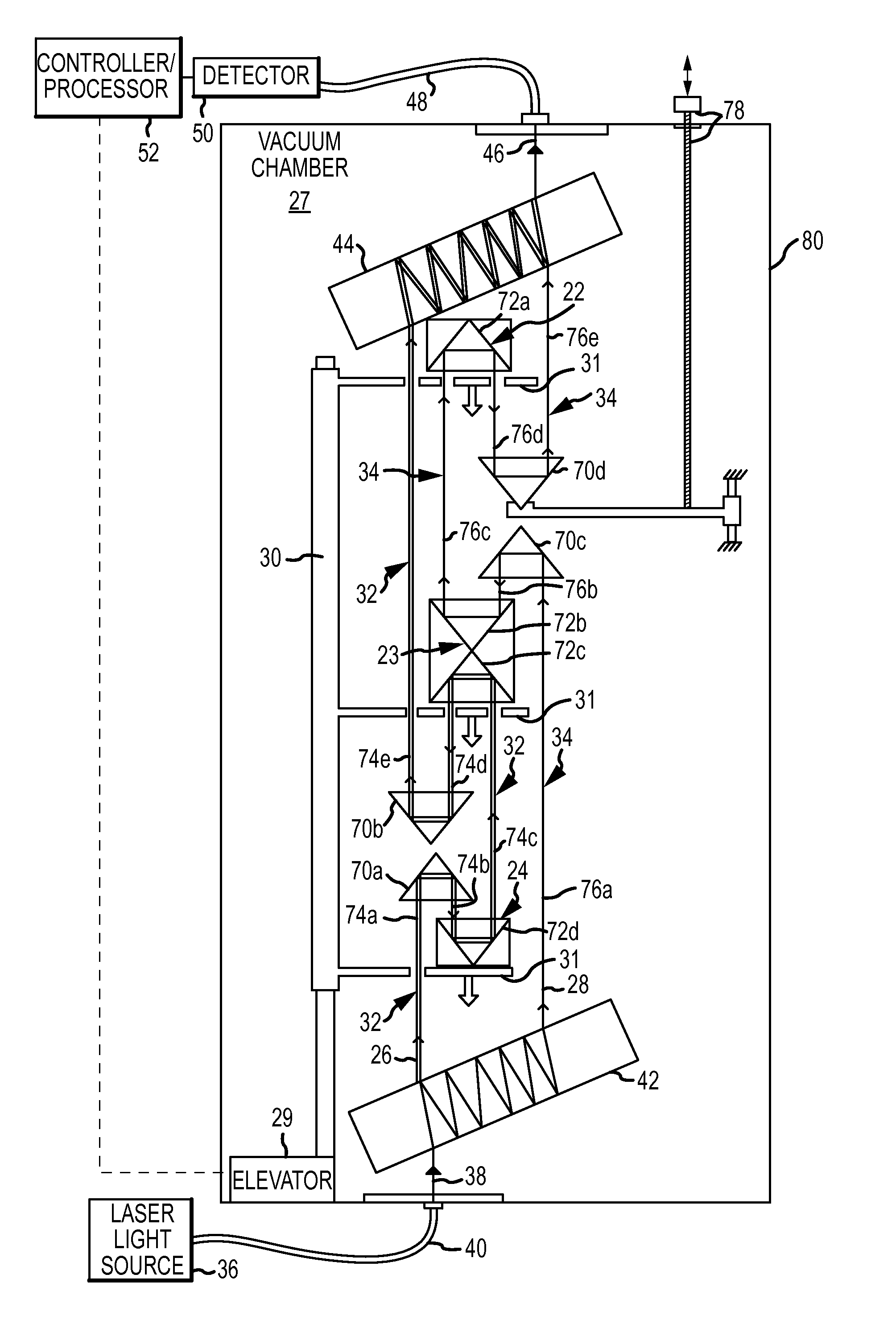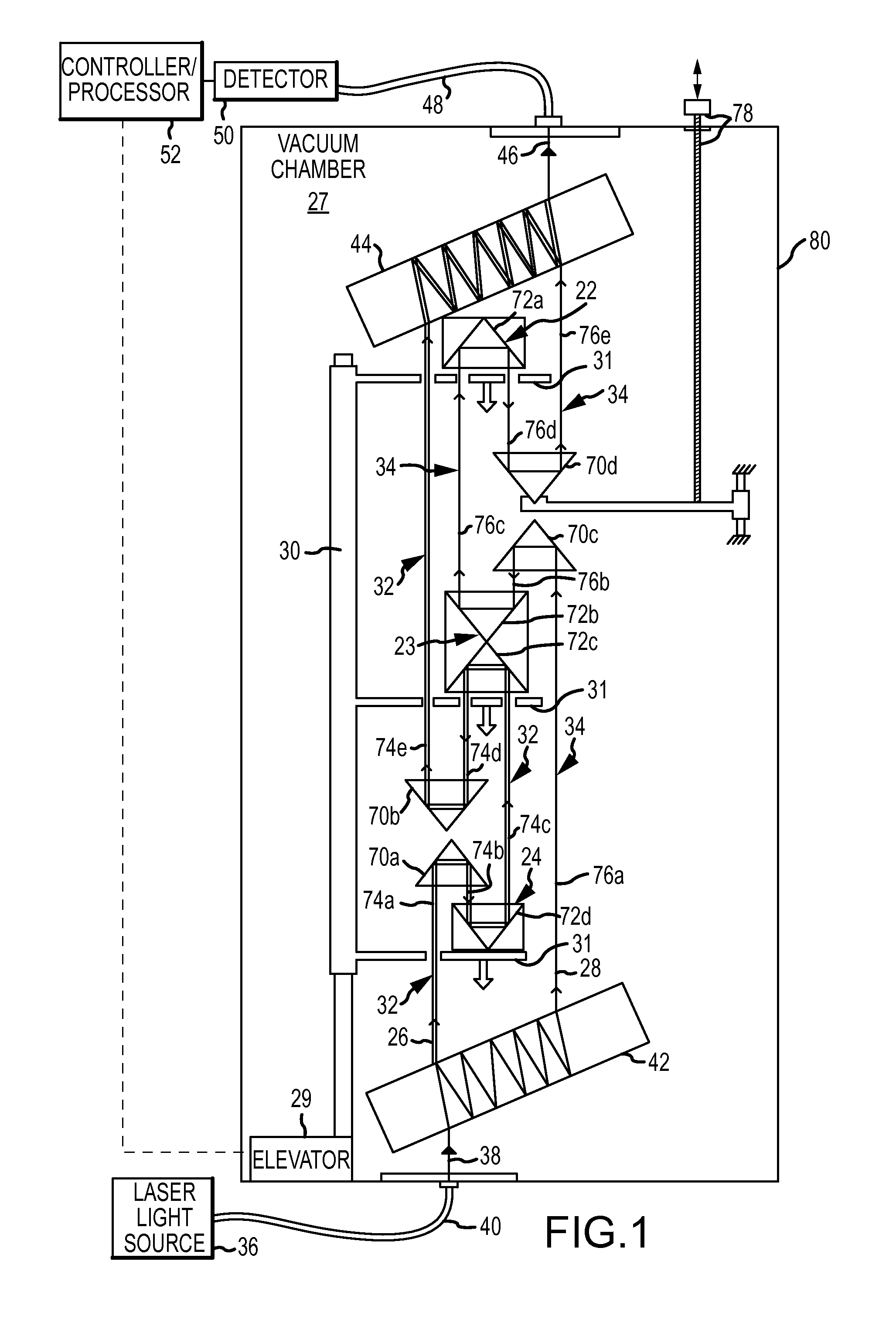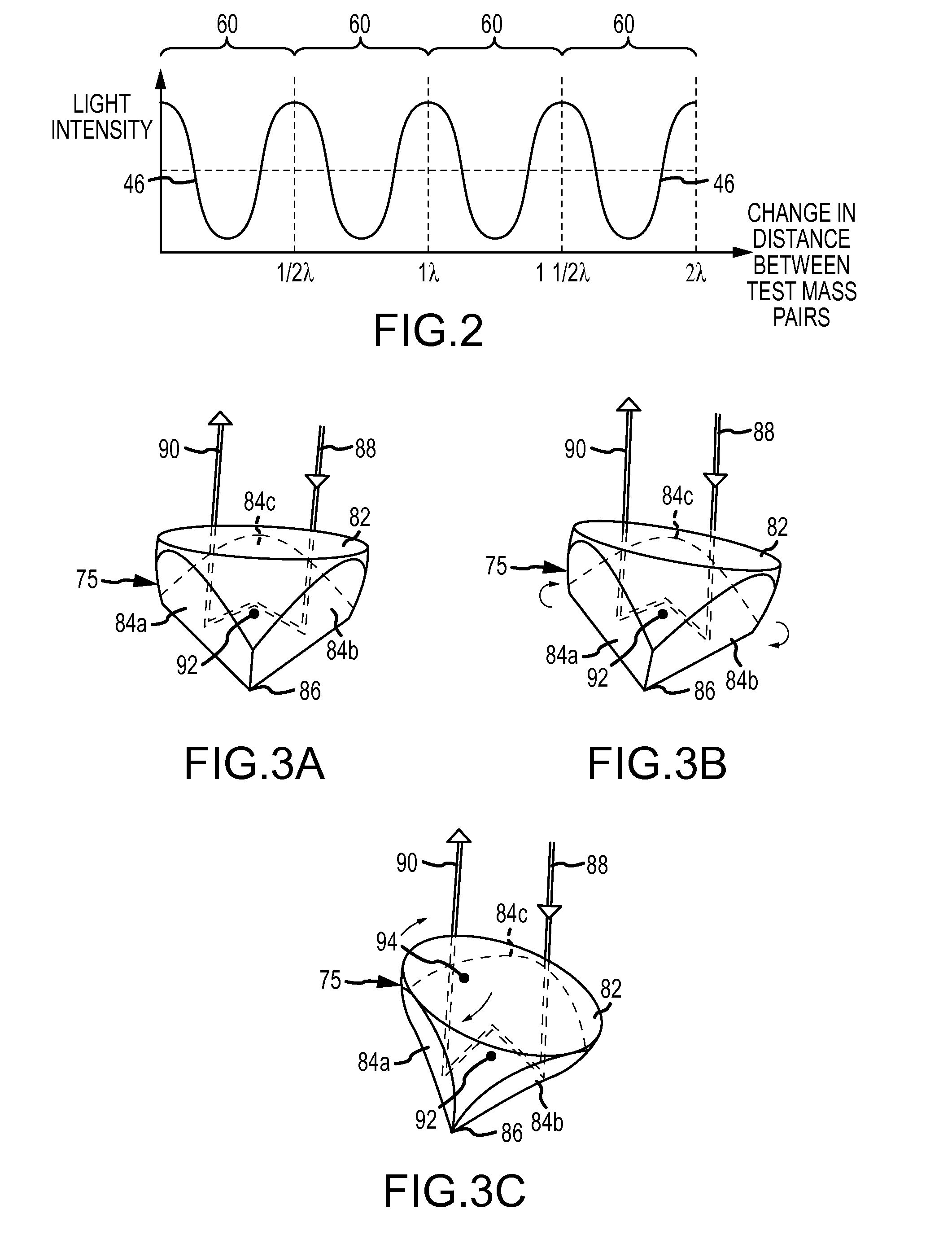Interferometric Differential Gradiometer Apparatus and Method
a differential gradiometer and interferometer technology, applied in the field of differential gradi, can solve the problems of multiple separate measurements, inconvenient detection, and inability to locate and detect subsurface density anomalies, and achieve the effects of facilitating detection, enhancing signal-to-noise ratio, and facilitating detection
- Summary
- Abstract
- Description
- Claims
- Application Information
AI Technical Summary
Benefits of technology
Problems solved by technology
Method used
Image
Examples
Embodiment Construction
[0045]The present invention involves an optical interferometric differential gradiometer 20, shown in FIG. 1, but aspects of the invention may be embodied in other devices and methods for measuring a characteristic of gravity. The differential gradiometer 20 is used to measure a differential gradient of gravity represented by the relative differences in gravity gradients experienced by two pairs of test masses 22, 23 and 23, 24 which are released to fall freely and simultaneously only under the influence of gravity. The force of gravity acting on the lower test mass 24 is very slightly greater than the force of gravity acting on the middle test mass 23, since the lower test mass 24 is closer to the center of the earth's mass and therefore experiences a slightly greater gravitational force. Similarly, the force of gravity acting on the middle test mass 23 is very slightly greater than the force of gravity acting on the upper test mass 22, since the middle test mass 23 is closer to th...
PUM
 Login to View More
Login to View More Abstract
Description
Claims
Application Information
 Login to View More
Login to View More - R&D
- Intellectual Property
- Life Sciences
- Materials
- Tech Scout
- Unparalleled Data Quality
- Higher Quality Content
- 60% Fewer Hallucinations
Browse by: Latest US Patents, China's latest patents, Technical Efficacy Thesaurus, Application Domain, Technology Topic, Popular Technical Reports.
© 2025 PatSnap. All rights reserved.Legal|Privacy policy|Modern Slavery Act Transparency Statement|Sitemap|About US| Contact US: help@patsnap.com



